You
may not find this terribly rewarding unless you're included here, so this is a
good time for casual and random browsers to turn back before they get too caught
up in the sweep and majesty of the proceedings and can't let go.
Castle-hopping in the Pays Cathare
The Château de Peyrepertuse

This is just a warm-up. This is the 10th-century Puilaurens Castle, one of the "five sons of Carcassonne" in the stark mountainous "Cathar country" south of the city that, after France put paid to the Cathar heretics, served to cover the then-frontier between France and the Kingdom of Aragon.

Puilaurens, closed for the season. That's okay! -- most of the other Sons of Carcassonne (Quéribus, Aguilar, and Termes) are shut up tight as well in late November, but not the one we've really come to see -- Peyrepertuse the Formerly Magnificent.

Stark countryside in the Pays Cathare -- a modern tourist-office term that serves very well to identify this beautiful but bleak landscape, historically charged by so many needless religious deaths.

We're onto back roads now, up through the forbidding Gorge de Galamus -- that's an improbable monastery down there on the right.

We've left the gorge and come around through a mountain pass to the village of Duilhac, and then up the access road to the carpark below Peyrepertuse. Which raises the question -- What Now?

Tickets in hand, we're off on the access path that winds over the ridge, along the ridge for a ways, and up to the front gate hanging out over the void.
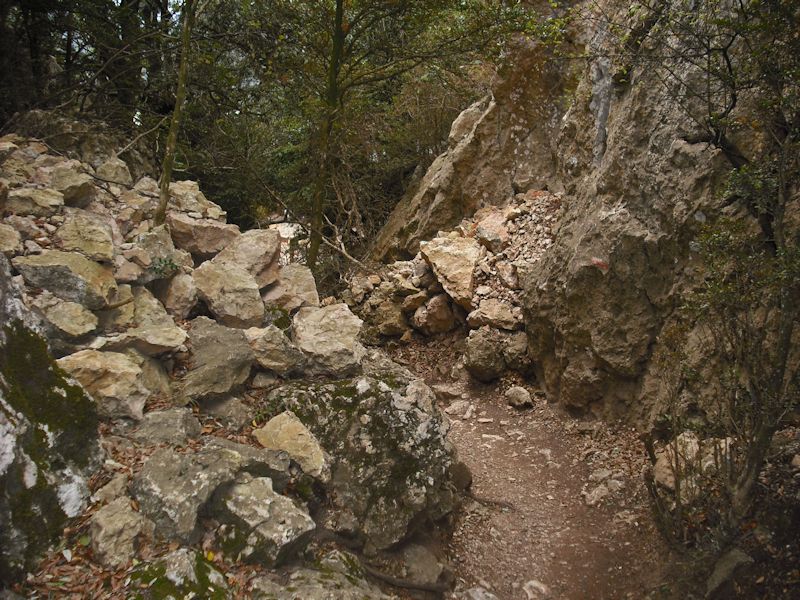

Kristin setting an example in castle-enthusiasm.

One pauses to cast a sigh for the poor draftees who had to carry all that stonework up this 800m hill.
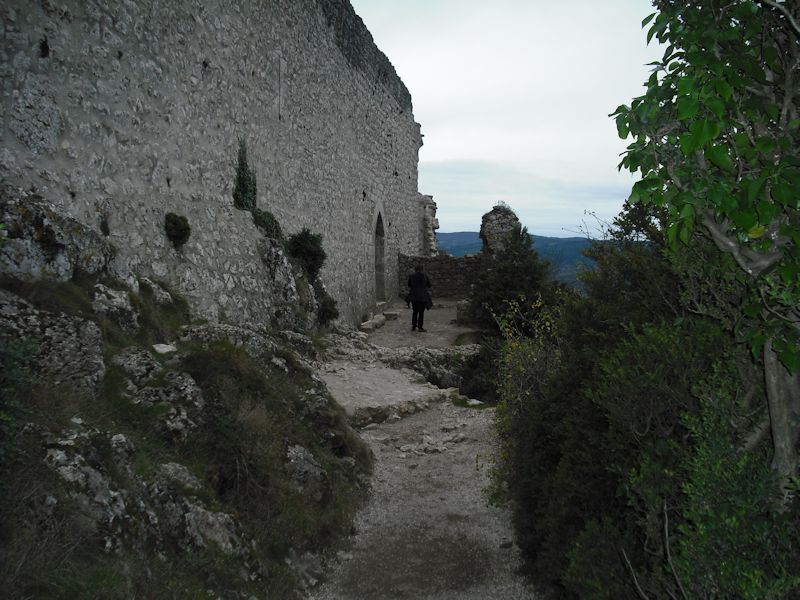
The only gate to the castle, fairly difficult to get to unless you've been invited.
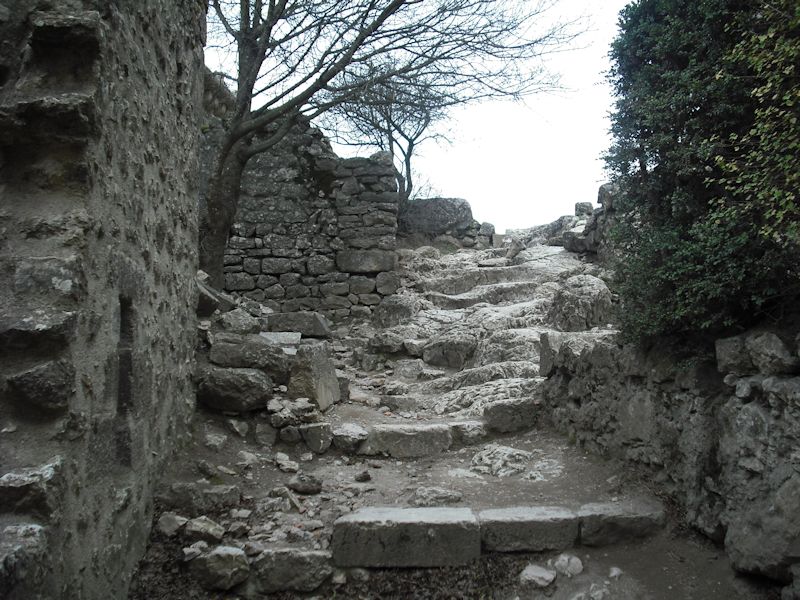
Inside the gate and up to the main parade ground. Some kind of fortification has been here since Roman times, but this stronghold is first mentioned in the records in 1070. Guillaume de Peyrepertuse, god bless him, was a Cathar sympathizer who held out long -- and even tried to besiege Carcassonne (mistake) -- but finally surrendered to the French in 1240.

This is the 120-metre extent of the old, or "feudal", castle along the ridge, from the pointy end back towards the donjon or castle keep.

The keep, or donjon, with the latrines hanging out over the cliffs on the left.

The latrines wing of the castle

Kristin, in the castle keep, taking an important call.

-- Some castle keep, ain't it?
After the French took over in the mid-13th century, they reinforced this keep, with the governor's lodgings up the stairway and the Sainte-Marie church just behind Kristin, and then they set about building still another fortress farther up the hill.

I'm on the stairway up to the governor's lodgings, looking back down into the slender courtyard.
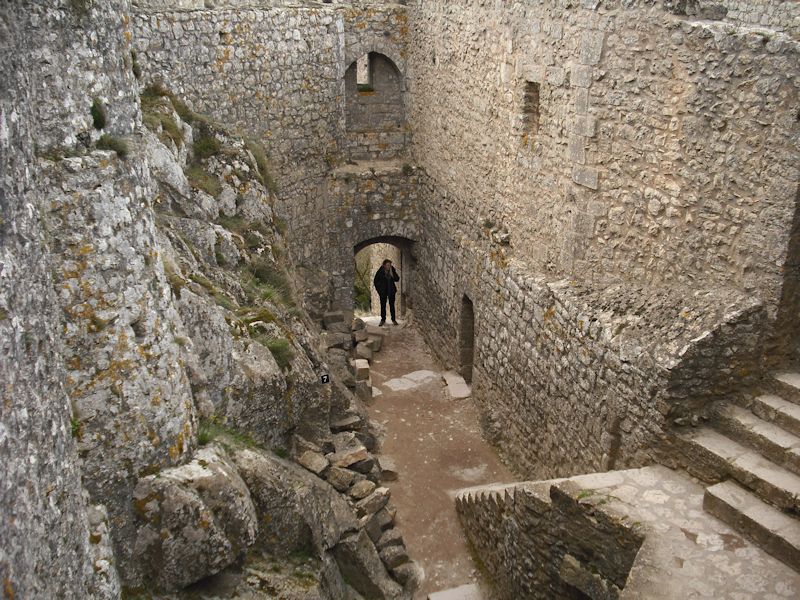
Kristin taking an important phone call.

Possibly from her broker.
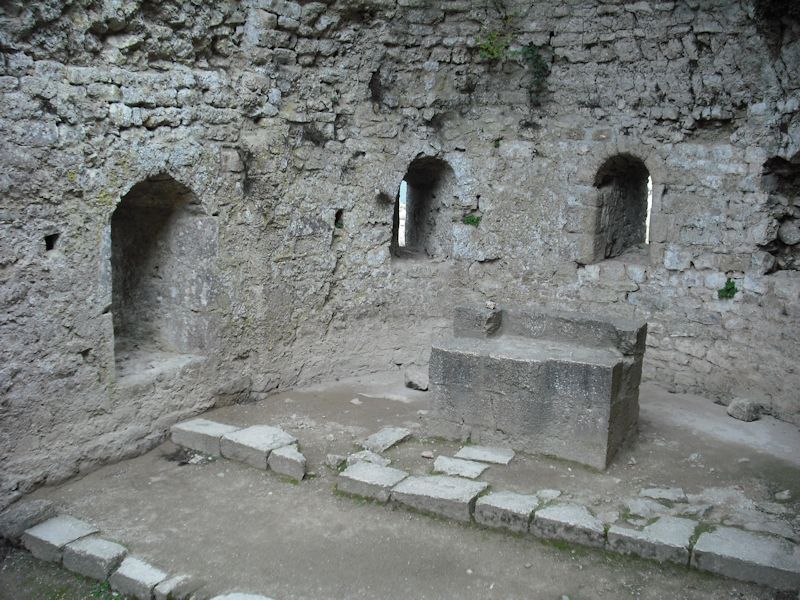
The Sainte-Marie church, a nice altar, and defensive loopholes all round it. A perfect blending of church and state. "Excuse me, padre. Can I just squeeze past you? I think I can get a clean shot from here."

A last look at the courtyard of the keep, with the governor's lodgings up on the right. A hard way to make a living.

But we're not finished yet -- nor would Spanish or other invaders have been finished yet, if they'd ever tried it.

Because there's another fortress just a little way up the hill. That's the San Jordi castle, built by Saint Louis after he got hold of the place. Let's go have a look (when the wind dies down a bit).
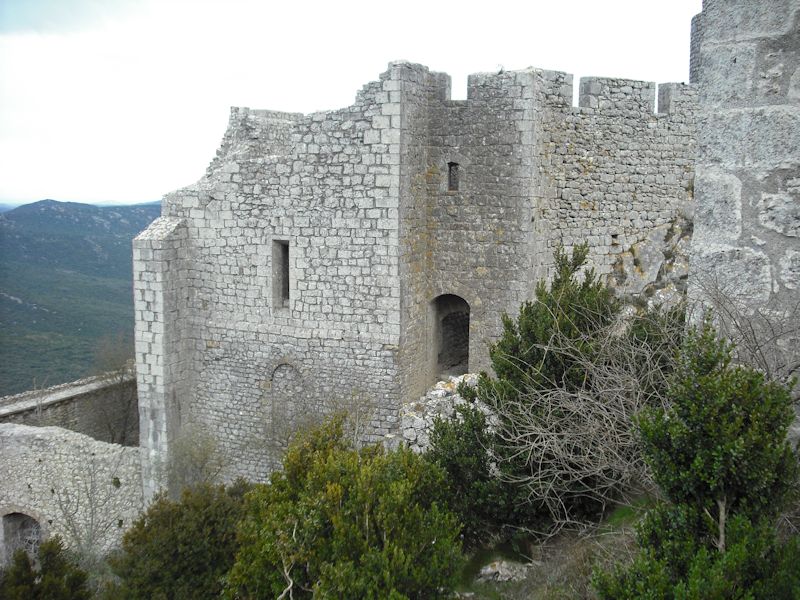
The first castle, called the "feudal castle", as we leave it behind.

Idem
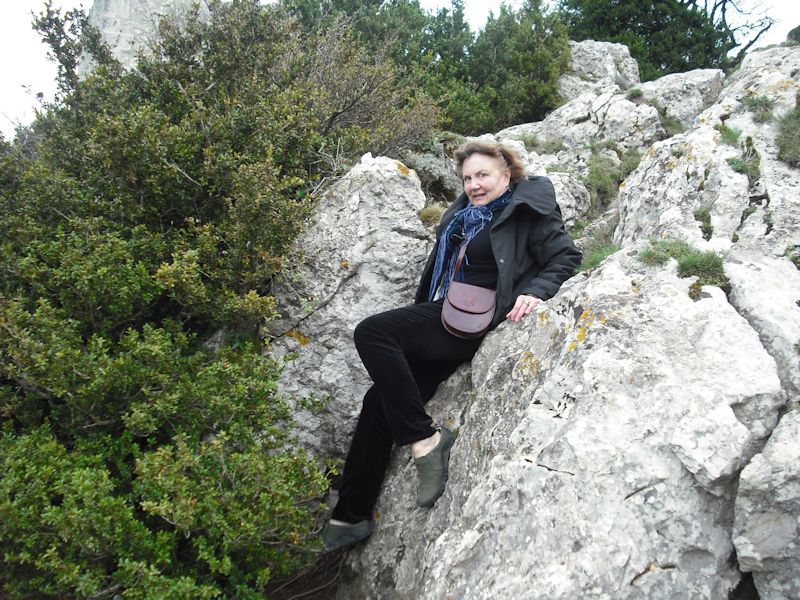
It's hard to imagine having to do this in a full suit of armor with people shooting at you.
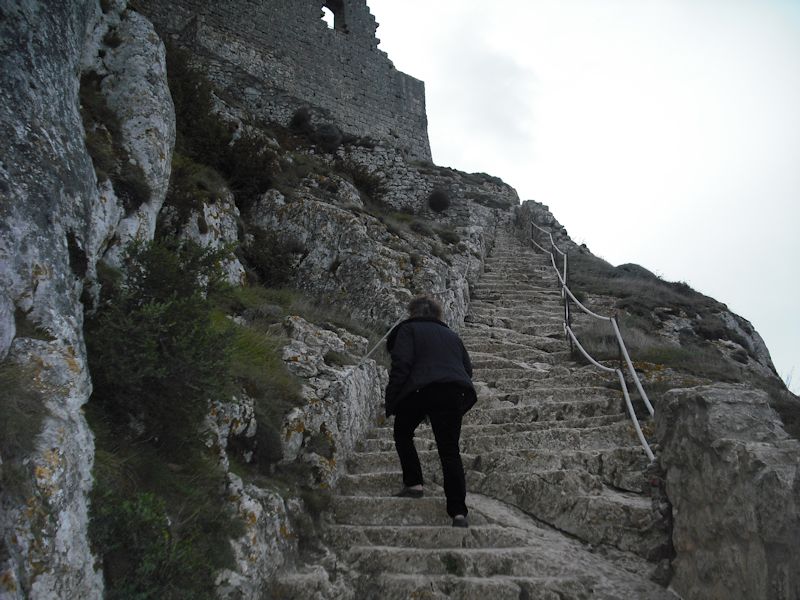
These are the Saint Louis Stairs up to the San Jordi fortress.
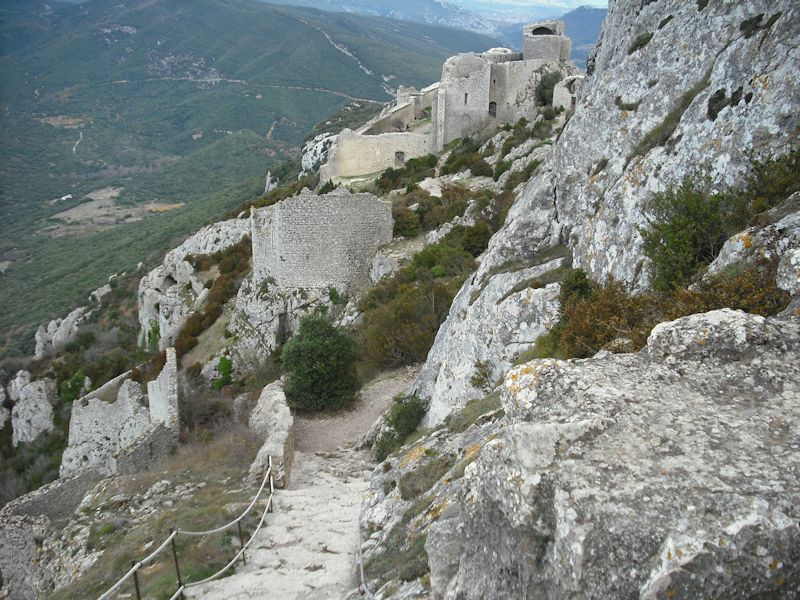
The "feudal" castle, as one is taking another well-deserved rest on the way up to San Jordi.
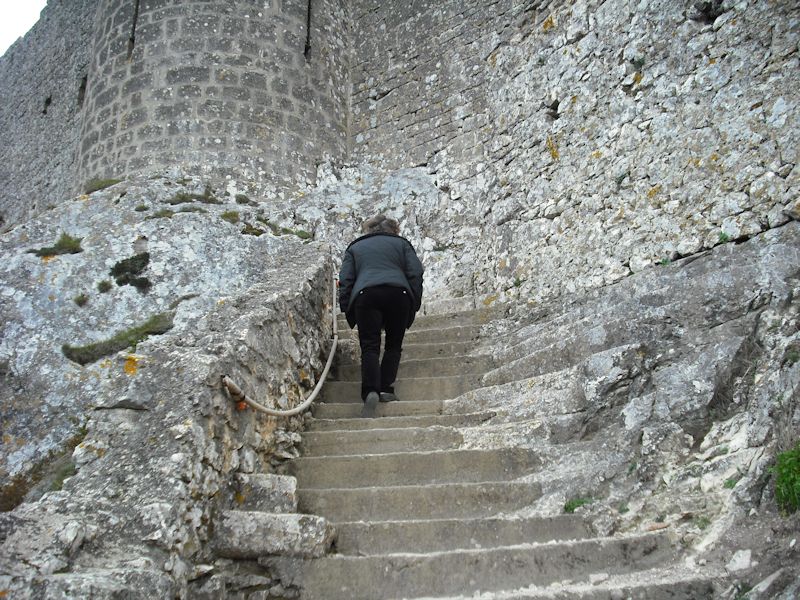

Kristin meets San Jordi (the Catalan St George).
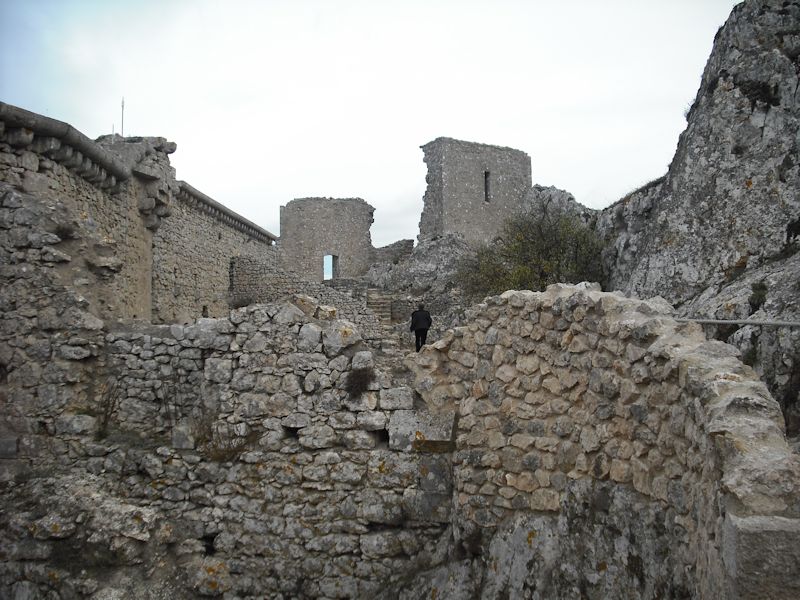
The interior of the 13th-century San Jordi, Kristin heading for the Chapel first thing.

Kristin picking up an important call.

These are nondescript ruined dwellings, but the chapel is up there at the high point. Flaunting it.
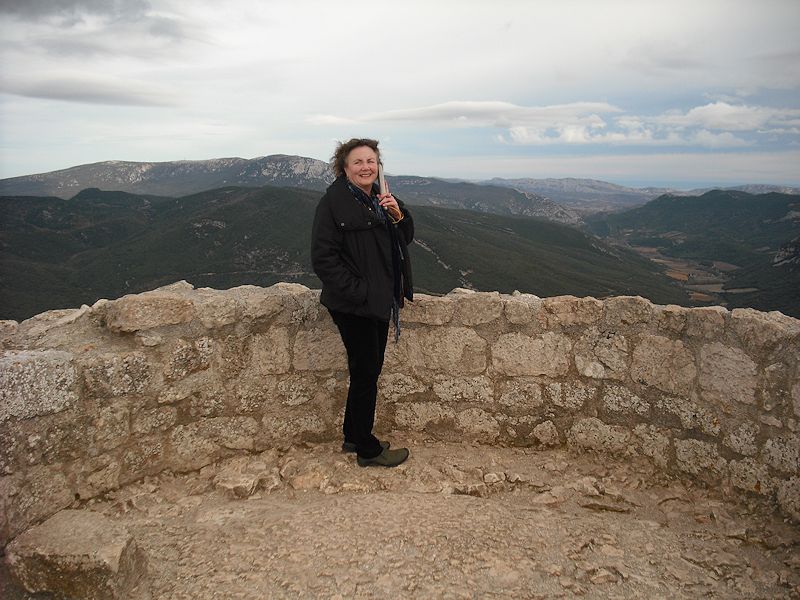
Kristin in the San Jordi chapel. Making a call.
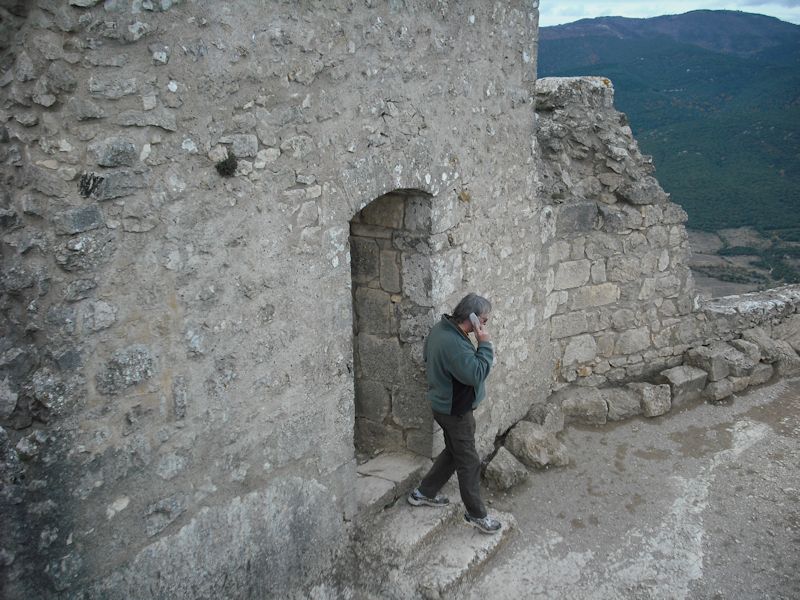
Dwight picking up on an important call
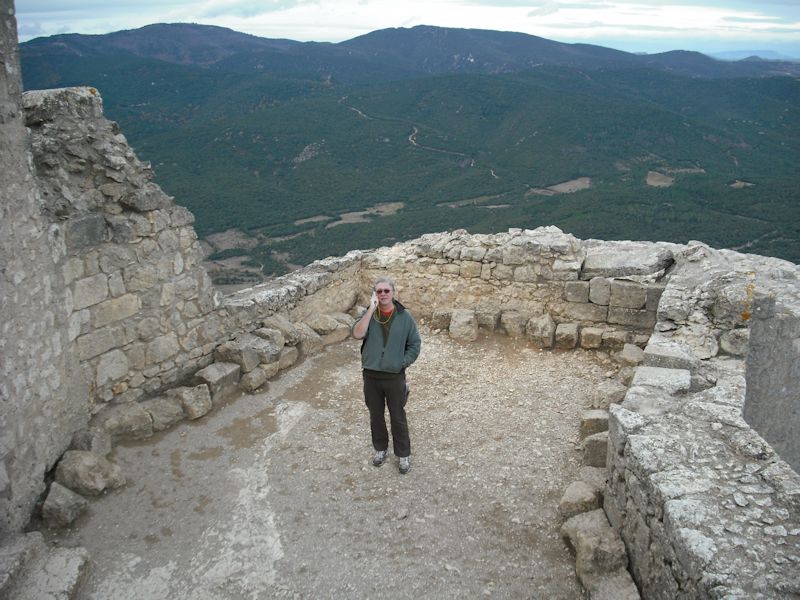
-- Oh it's you! I'm right down here. I can see you!
Actually, these audio guides were informative, but couched in a lame scenario of a military auditor strolling round and telling you what he's inventorying, with (in the English version) an Inspector Clouseau French accent.
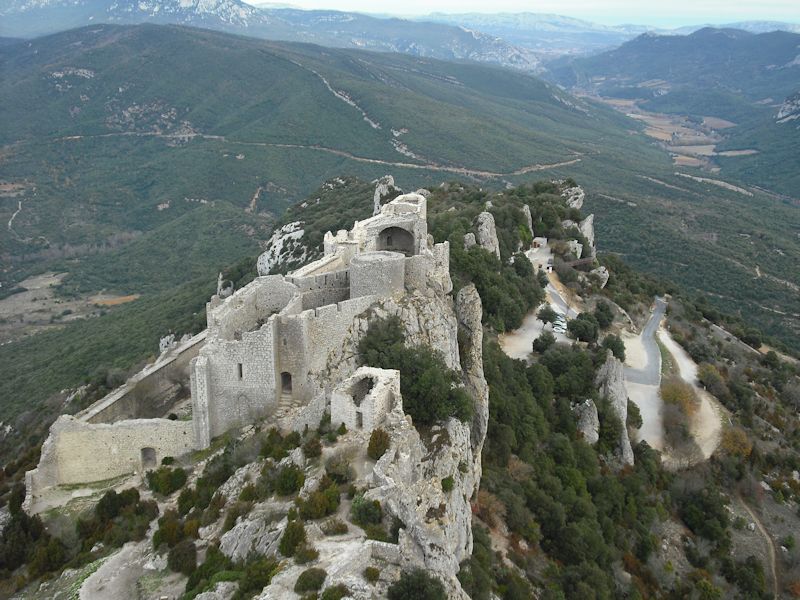
The lower fortress, from San Jordi, with the carpark down on the right. According to our audiophone guide, this fortress was normally manned by a garrison of 25.

The lower keep, from San Jordi, with the Fujizoom on.
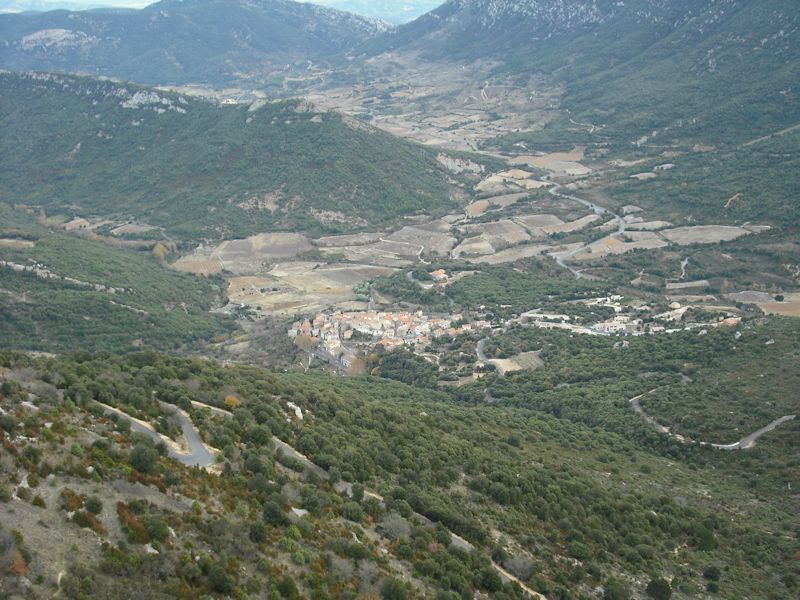
The village of Duilhac-sous-Peyrepertuse. Population: 104. Industry: Tourism and wine growing. After the Treaty of the Pyrenées in 1659, which pushed the Franco-Spanish border back to the mountains, the Five Sons of Carcassonne fortresses lost their front-line status and declined in importance. Thereafter they were garrisoned by "mortes payés", local chaps who took their turns up here in return for not having to pay royal taxes. According to the guide, they were allowed to dash down to visit their families in the evenings as long as they dashed back up before opening bells.

That's enough for the chapel.
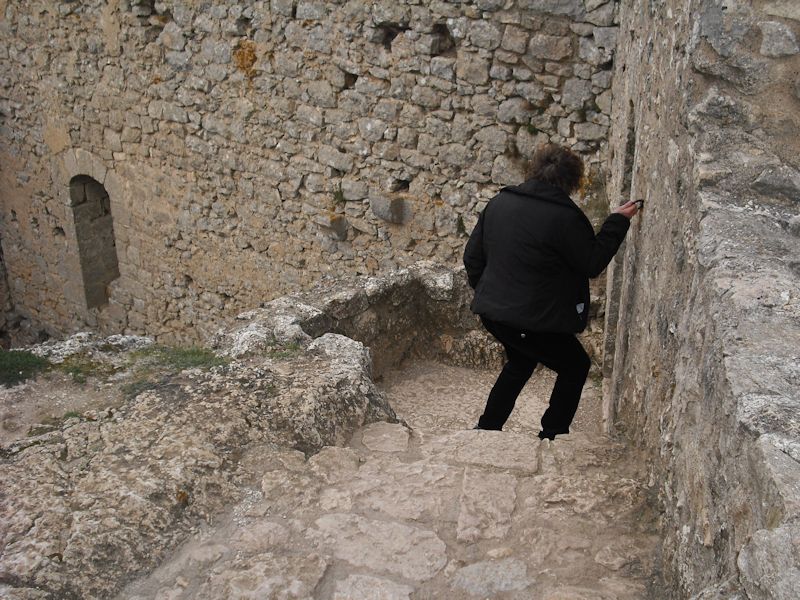
Mind the step.

That seems like a long way to dash down and back up again just to help with the washing-up at home.

Kristin wondering what's holding up the Rest of the Party.


Back down Saint Louie's Stairs, with the village of Rouffiac off the far side of the ridge
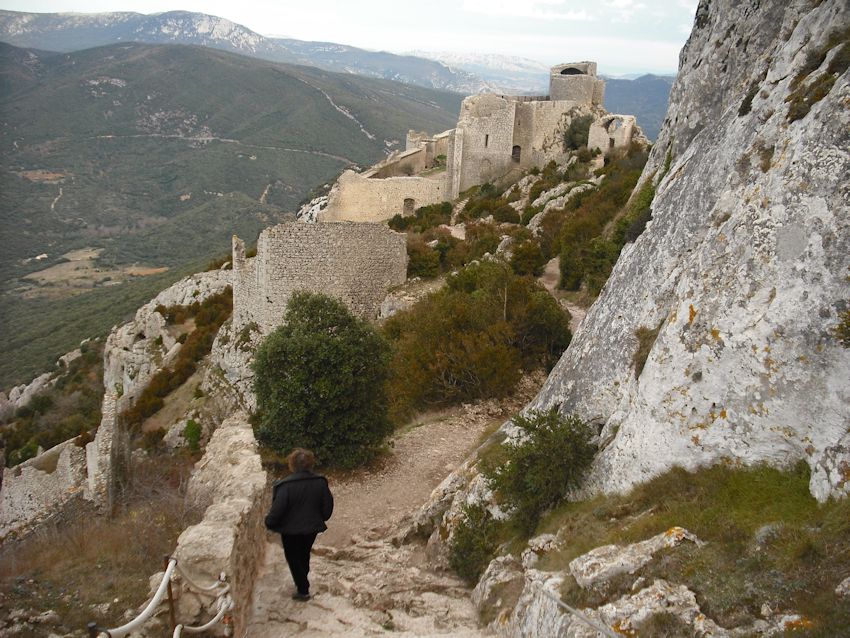
Saint Louis' Stairs and the long way home
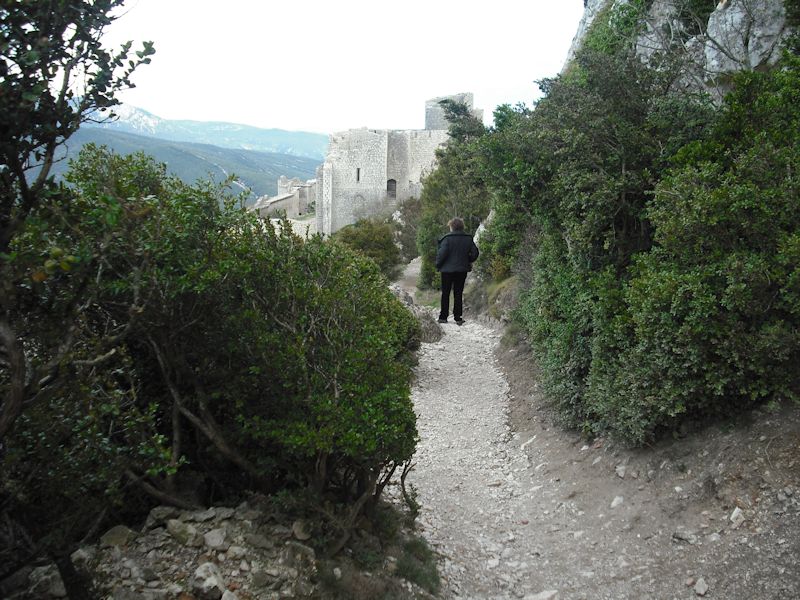
Kristin-views on the way back to the lower castle
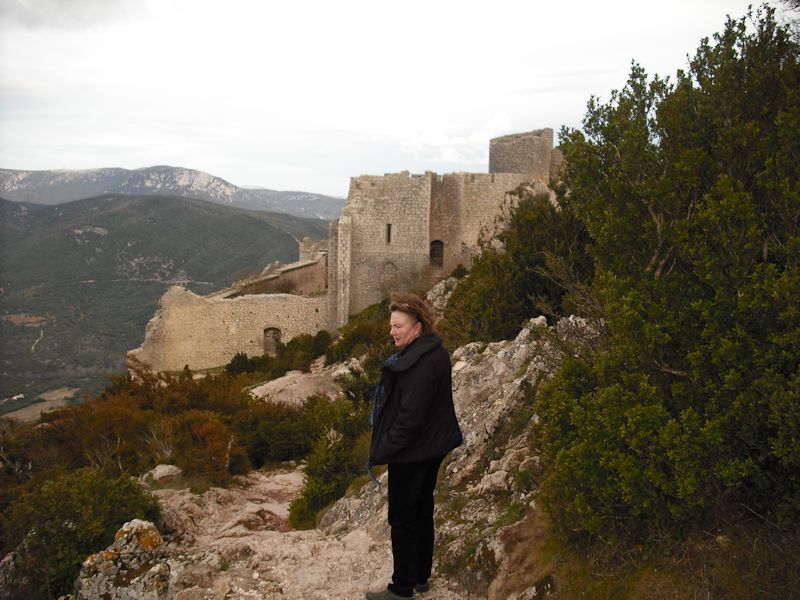
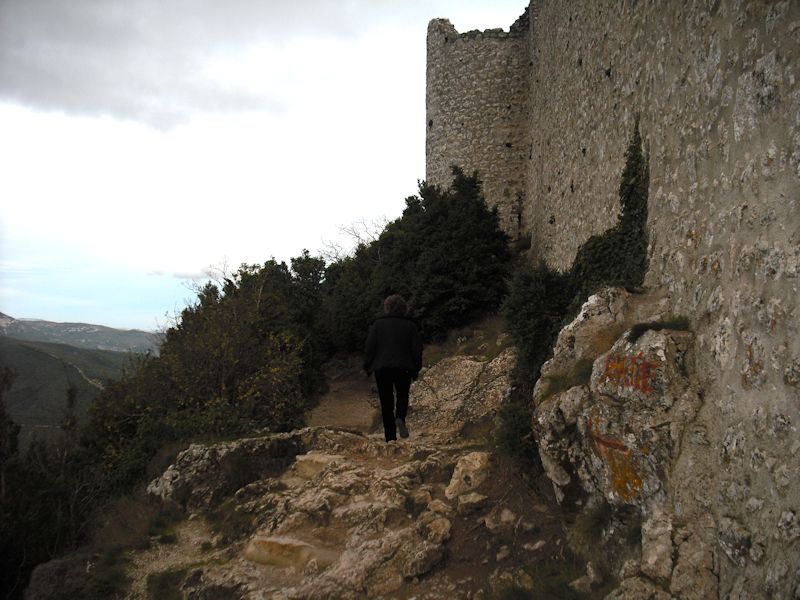
Back out the front door and on the way home

Another rare contemplative moment. Thus inspirited, we wander back through Cathar Country after dark, on back roads and thoroughly lost. But with a cassoulet awaiting us at the end of it.
Next -- Still another cassoulet on our last night in Carcassonne
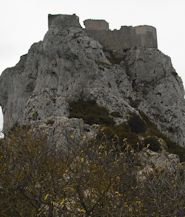 Dwight Peck's personal website
Dwight Peck's personal website



















































